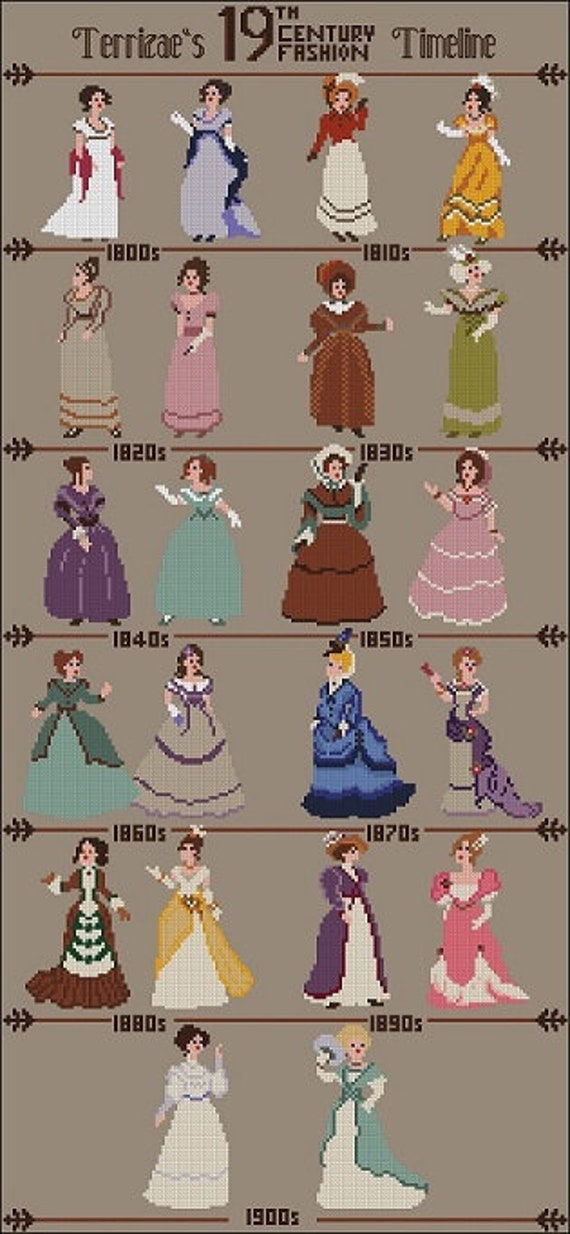
Exploring 19th Century Fashion: A Journey Through Time
The Glamour of the Gilded Age: Introduction to 19th Century Fashion
The 19th century, often referred to as the Gilded Age, was a period of opulence, elegance, and significant transformations in the world of fashion. It was a time when society’s elite flaunted their wealth through lavish garments adorned with intricate details and luxurious fabrics. From voluminous skirts to tailored suits, 19th-century fashion reflected the social, cultural, and economic dynamics of the era.
Victorian Elegance: Women’s Fashion in the 1800s
For women, the epitome of 19th-century fashion was the Victorian era, characterized by its romanticism, modesty, and refinement. Women’s attire during this period was defined by elaborate dresses with high necklines, fitted bodices, and voluminous skirts supported by crinolines or later, hoop skirts. Fabrics such as silk, satin, and velvet were favored, often embellished with lace, ribbons, and intricate embroidery.
Masculine Sophistication: Men’s Fashion in the 19th Century
In contrast, men’s fashion of the 19th century exuded an air of masculine sophistication and tailored precision. The silhouette of men’s clothing evolved from the Regency era’s fitted coats and breeches to the more structured and tailored suits of the Victorian period. High-collared shirts, waistcoats, and frock coats were commonplace, often complemented by top hats, cravats, and leather gloves, symbolizing status and refinement.
Fashionable Accessories: Completing the Look
Accessories played a crucial role in completing the fashionable ensembles of the 19th century. For women, elaborate hats adorned with feathers, flowers, and ribbons were a staple accessory, adding a touch of elegance to their outfits. Gloves, parasols, and fans were also popular, not only for their practical purposes but also as fashionable accessories. Men, on the other hand, accessorized with pocket watches, walking sticks, and monocles, further accentuating their sartorial elegance.
Changing Silhouettes: Evolution of 19th Century Fashion
Throughout the 19th century, fashion underwent significant transformations, reflecting changes in societal norms, technological advancements, and artistic movements. The early decades saw the dominance of empire waistlines and slim silhouettes influenced by the Neoclassical style. However, as the century progressed, the silhouette shifted to emphasize the natural waistline for women, while men’s fashion embraced more tailored and structured garments.
Revolutionizing Undergarments: The Role of Foundation Wear
Behind the glamourous façade of 19th-century fashion lay a complex system of undergarments that shaped and supported the elaborate outer garments. For women, corsets were indispensable, providing the desired hourglass figure and supporting the weight of voluminous skirts. Crinolines, hoop skirts, and later, bustles, further enhanced the silhouette, while petticoats added volume and shape to skirts. Similarly, men relied on undershirts, drawers, and padded waistcoats to achieve the desired fit and silhouette for their attire.
The Influence of Royalty and Celebrity: Fashion Icons of the 19th Century
Royalty and celebrities played a significant role in shaping 19th-century fashion trends, as their style choices were closely followed and emulated by society at large. Queen Victoria herself was a fashion icon, popularizing the white wedding dress and setting trends with her conservative yet elegant attire. Likewise, actresses and socialites of the time, such as Sarah Bernhardt and Empress Eugénie, influenced fashion with their bold sartorial choices and glamorous lifestyles.
The Legacy of 19th Century Fashion: Enduring Influence and Inspiration
Despite being over a century old, the legacy of 19th-century fashion continues to inspire designers, historians, and fashion enthusiasts alike. Its timeless elegance, attention to detail, and emphasis on craftsmanship serve as a reminder of an era defined by beauty, refinement, and artistic expression. From period dramas to haute couture runways, the influence of 19th-century fashion can be seen woven into the fabric of contemporary style, ensuring its enduring relevance in the ever-evolving world of fashion. Read more about 19th century fashion
